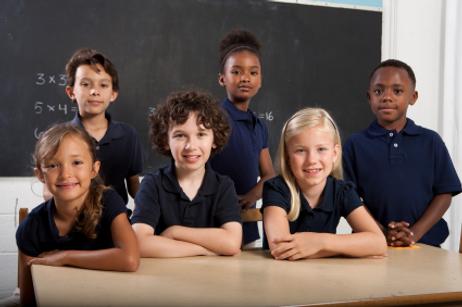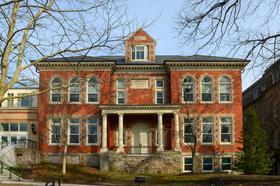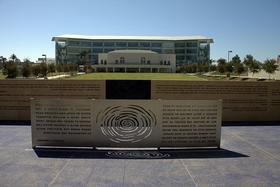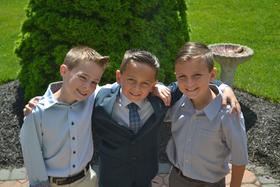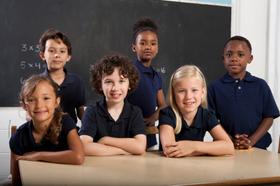As a parent, you’re always looking out for your children, trying to make the best decisions for them and their futures. When it comes to schooling, parents often have to work out whether to send their children to private school or keep them in public school. Hopefully, this article will help you decide which school is best for your family. We’ll first talk generally about some of the different factors that impact decisions regarding public and private schools. Then we’ll go over some national statistics regarding public and private schools. Finally, we’ll leave you with a conclusion that should help you decide what is best for you.
Factors affecting Private versus Public school decisions
Public schools are schools that are provided by state and federal funding. Ninety percent of the children today in America attend public school. Private schools include both parochial schools and non-parochial schools. According to a special report published by the National Center for Education Statistics (NCES) in 2002, in 1999–2000, approximately 27,000 private schools accounted for 24 percent of all schools in the US and 12 percent of all full-time-equivalent teachers. Clearly, there are many more public schools that provide education to American students than their private counterparts.
When looking at public or private schools, the following factors come into play:
- Academic reputation and college preparation
- School size and class size
- Safety reputation
- Special programs
- Costs
- Religious and Moral instruction
- Location
- Ideology
Academic reputation plays a big role when considering private versus public schools. School systems vary greatly in their academic reputation. For as many wonderful public schools that exist, there are also those that perform under the bar. Unfortunately for most families, children must go to the public school that their home is zoned in. Usually, there is a perceived or statistically supported issue with a public school’s academic record that flags a parent’s concern and willingness to move their child into a private school.
Private schools usually have a more rigorous academic reputation. But within the public school system, Charter Schools and Magnet schools both blur the distinction between public and private schools. Related to the academic reputation is the focus of the school on college preparation. Within the public school system, the percentage of children that go on to college differs depending on the location of the school. You can’t lump all the schools together. However, you can look at the school’s overall focus and whether it is on college preparation or not (and whether that is your shared focus).
School Size and Class Size can be correlated to a school’s ability to execute on its academic goals. Basically, when a school gets too big, it can become burdensome to administer. Students and programs may fall through the cracks. But a school that is too small may not have enough money to support specialized programs. Class size is another factor that parents will look into when considering private or public schools. How many children will the classroom teacher be responsible for? What is the overall student-to-teacher ratio? Usually, the smaller the class size, the more attention each individual student will receive.
Safety at school and the general school environment is another factor that parents use to decide whether or not to keep their children in public school or move them into private school. Many public schools have perfectly safe environments, yet in some school districts, children may be safer in private schools. Some of this may have to do with the fact that private schools may pick and choose who they enroll, therefore keeping their classroom milieu safer.
Special programs impact parents in two different ways when considering private versus public schooling. Because public schools have a responsibility to teach all students, public schools often have in place special programs for children with special needs, be they academic or developmental in nature. Private schools, while they may have special programs for gifted students, will rarely have programs for children with special needs unless that is what the private school specializes in. There are also other kinds of special programs, for example, ones that specialize in the arts. Military, boarding, and single-sex programs are usually only found in a private setting.
Cost is another important factor that impacts the private school versus public school decision. Simply put, private schools charge tuition whereas public schools are offered free of charge. For many parents, this is the hardest factor with which to come to terms.
A factor that plays a large role in parents deciding whether to send their children to public or private school is whether or not they want religious and or moral instruction to play a part in their children’s academic setting. Overall, religious and moral instruction does not play a part in public schooling.
Location is as important a factor as any other when considering whether to enroll your children in a public school or a private school. For public schools, you are either within the zoning district of the public school you want or not. If you are, then you don’t need to worry about anything. If you aren’t, you’ll need to consider whether relocating your family is desirable and feasible in order to get your children enrolled in your public school of choice.
However, many states have instituted school choice programs that allow families who are not residents of a district to apply for admission for their child to attend that district. Oftentimes the receiving district is paid tuition to cover the expenses of educating the child by the sending district or even by the child’s family. Regardless, school choice programs provide some flexibility for parents who want their child to attend a public school.
For private schools, you’ll need to consider if the location is feasible for your family. Public schools provide transportation to and back from schools. Private schools may or may not.
Finally, for many families, a final factor that impacts their decision-making process is their ideology regarding private schools or public schools, classism, elitism, etc. Parents are not usually on the fence about this factor. They either believe that going to private school is okay or they believe that going to a public school is better in the theoretical sense.
Private and Public School Statistics
Now that we understand some of the main factors that families consider when deciding whether to enroll their children in private or public school, let’s look at the facts. Here are statistics on both private and public schools in America:
Academic Programs
Public schools offer a general program, designed for all. This usually includes math, English, reading, writing, science, history, and physical education. In addition, many public schools offer programs in music, art, languages, technology, and career education too. What students learn is decided by the state. In most states, learning is measured through standardized tests. The content and minimum achievement criteria in each course offered in public high schools are put forward by the state and each student must achieve this minimum criterion before receiving credit.
The charter school movement is also picking up momentum in many states. These schools are public but offer specialized programs and smaller classes and are governed by a board of directors (usually consisting of parents and community members). Charter schools have become more popular over the last decade. As of 2011, charter school legislation had passed in 41 states and the District of Columbia. There are not that many charter schools in the United States when compared to the number of traditional public schools. However, the number of charter schools is steadily growing. According to the Center for Education Reform, there were approximately 3,400 public charter schools in the US as of 2005. That figure increased to 5,300 schools in 2011 according to . Overall enrollment in charter schools also increased, from 340,000 students in 2000 to nearly 1.8 million students in 2011.

Growth of Enrollment in Charter Schools by Academic Year
Magnet schools are yet another public school option for families. Magnet schools are part of the public school system, however, enrollment in magnet schools is not controlled by neighborhood boundaries. Instead, students must apply to be admitted to the school. Magnet schools generally have public as well as private funding, which allows the school to offer a wider variety of educational programs, teacher training, equipment, and the like. Many magnet schools have a specialized instructional focus. For example, a magnet school might specialize in the performing arts, science, and technology or have a career-technical focus. According to the , there were 2,700 magnet schools in the United States as of 2011.
Private schools have the flexibility to create specialized programs for students. For example, private schools may use art or science in all classes or take children on outdoor trips. They can create their own curriculum and assessment systems, although many choose to use standardized tests. Many parents are drawn to the alternative curriculums that private schools have to offer.
Private school students generally perform higher than their public school counterparts on standardized achievement tests. As with earlier results from the National Assessment of Educational Progress (NAEP), private school students performed higher than public school students on the NAEP: 2000 tests. Their average scores were above those of public school students on the 4th-grade reading test and on the 4th-, 8th-, and 12th-grade science and mathematics proficiency tests.
Private high schools typically have more demanding graduation requirements than do public high schools. Compared with public schools, private schools required more coursework (in 4-year high school programs) in 1999–2000 in social studies, mathematics, science, foreign language, and computer science. For example, private schools required on average 3.1 years of mathematics, while public schools required 2.7 years. The figures for foreign language study also differed: 1.5 years at private schools but 0.5 years at public schools. In addition, about 40 percent of private schools required some form of community service for high school graduation, four times the rate for public schools (10 percent).
School Financial Support System
Public schools depend on government funds (local, state, and federal) and occasionally on funds from corporations and organizations.
Private schools depend mainly on tuition fees and funds coming from non-public sources such as religious organizations, endowments, grants, and charitable donations. Private schools can participate in federal breakfast and lunch programs, but they usually don’t need to.
School Size
Public schools are, on average, at least twice the size of private schools, according to the US Department of Education Data. School size usually correlates to the population density of the local area. The average private school had 193 students in 1999–2000, whereas the average public school has 517 students, . The average public school had 535 students in the same area. Another way to look at this is to see that 80 percent of private schools have less than 300 students enrolled while only 29% of public schools have less than 300 students enrolled.
While smaller school size may be correlated to a more controlled academic setting, the flip side is that there is strength in numbers. Small schools have some disadvantages as well such as providing a narrower set of programs and services. The smallest high schools may not be able to offer advanced courses because they have too few students, a shortage of qualified teachers, or both.
Larger schools can often be set up to support specific groups within their student population (such as those requiring English as a Second Language targeted help). Overall, research is debatable over whether a smaller school size is correlated with a better academic setting.
Class Size
The average class size in public schools is larger than in private schools. Many states recognize the value of small classes and have provided funding to keep class sizes small in grades K-3. As students become older, class size tends to get bigger in public schools, especially in large school districts and urban schools. On average, private schools have smaller average class sizes than public schools. A 2008 study by the shows that private school class sizes vary from 15.4 students up to nearly 20 students per class. For public schools, teachers average between 20 to just over 23 students per class.
Another aspect besides the actual class size is the student-to-teacher ratio. This is different from the actual classroom headcount because a school may have extra teachers that help set up programs or help with special coursework. According to the , as of 2009, private schools averaged 12.5 students per teacher, compared with an average of 15.4 students per teacher in public schools. Another way to look at this is to see how many schools have a student/teacher ratio less than 10. Thirty-six percent of private schools have a student-to-teacher ratio lower than 10 to 1, whereas only 10 percent of public schools have student-to-teacher ratios lower than 10 to 1.
If you feel your child would learn better in a smaller setting, then you’ll need to look towards private school. If, however, your child works well in larger groups, a public school may be the way to go.
Quality of Teachers
Teachers in public schools are state-certified, which means that they have gone through the training required by the state including student teaching and coursework. They are required to hold college degrees and to be licensed by the state. Additionally, as part of the No Child Left Behind (NCLB) Act, all public school teachers must demonstrate that they are “highly qualified.” This designation is achieved if teachers hold at least a bachelor’s degree in the subject area in which they teach and are state-certified, or if they do not hold a degree in their subject area they must demonstrate competency in their area of teaching through some other means, such as testing. Public schools cannot terminate the contracts of their teachers abruptly. After completing a probationary period, teachers are granted tenure by law. They cannot be dismissed without first going through a twelve-month rehabilitation period. This too can only be done after a public hearing in which charges of incompetence or misconduct must be proven.
On the other hand, private school teachers may not be required to have certification, and often have subject-area expertise and a degree in the subject they teach. Private schools have their own personnel requirements. Private schools can terminate the terms of their teachers abruptly. Schools are free to deal with personnel matters.
Level of Education
Most schools—61 percent of private and 71 percent of the public—were elementary. Ten percent of private schools and 25 percent of public schools were secondary. Finally, a higher proportion of private schools (30 percent) combined education levels (usually grades K–12 or 1–12), compared with only 4 percent of public schools. Usually, public schools are broken out due to their size.
If having your child around kids that are much older or younger bothers you, you may have an easier time finding a public school that meets your needs than a private school.
Special Needs
Another aspect that needs attention is regarding children with special needs. Special education laws make it mandatory for public schools to educate and meet the special needs of these children. Therefore, most public schools have special programs and teachers for these students. Public school systems often will have specialized schools to support children with multiple special needs.
Private schools, on the other hand, have no such obligation; most private schools do not have special education programs or teachers. However, there are private schools that cater specially to special needs.
If your child has a special need, you’ll need to research your options to determine whether public or private school best suits your child at this time.
Obligations
Public schools are obligated by law to educate all children, so to enroll in a public school you simply register your child by filling out the necessary forms. Public schools must accept any resident student who applies for admission, regardless of sex, race, religious affiliation, economic status, or physical or mental handicap. Public schools must also meet state graduation requirements, which vary state by state. Public schools can kick children out if their behavior is too disruptive, but the public school system will usually have in place an alternative school that the child will attend until they are no longer under the care of the public (18 years of age).
Private schools are not obligated by any laws regarding admission. Therefore, private school admission is competitive. Also, private schools are not required to provide educational programs for children with special needs. Private schools are also under no obligation to keep a student enrolled. If a child’s behavior disrupts the school’s milieu, they can be kicked out. Another scenario to keep in mind is that if a child’s academic progress is not acceptable, they may be kicked out as well. Graduation requirements for private schools are decided by each school and are not subject to any state requirements. Many private schools do choose to align themselves with private school associations which will mandate graduation requirements.
School Admissions
In public schools, all students are admitted. In private schools, students must apply and then are invited to enroll.
Cost
Cost is another important factor that helps in deciding the type of school parents want to send their children to. State Constitutions prohibit public schools from charging residents any form of tuition or other fees for materials, supplies, textbooks, or transportation.
On the other hand, private schools do not receive tax revenues but are funded through tuition, donations, and private grants. Therefore, private schools cost more than public schools. According to the National Association of Independent Schools, the median tuition fee for private day schools in the United States is close to $12,000 for grades 1 to 3, $13,000 for grades 6 to 8, and $15,000 for grades 9 to 12. The median tuition fee for boarding schools is $12,000 for grades 1 to 3, $27,000 for grades 6 to 9, and $28,000 for grades 9 to 12. Fees in parochial schools are a little less. Another study found that parochial schools cost $4,200 a year while other private schools charge $8,500 per student.
One thing to consider, however, is the location of public schools. That is, better-funded public schools are usually found where the average housing costs are higher than in neighboring zip codes. That said, although public school is free, you may find yourself paying more out of pocket to live in a specific school zone.
Support Services
Public schools are required to provide academic and health-related services under Federal and state laws. More schools provide extended-day programs. Free and reduced-price meals must be provided to all qualified low-income students.
Private schools are permitted, but not required, to participate in the federal lunch and breakfast programs.
Religious Affiliation
Public schools are not religiously affiliated, but many private schools are religiously affiliated. In a of private schools, 68 percent of all private schools were found to have a religious affiliation, with 22 percent of those affiliated with the Roman Catholic Church and another 13 percent identified with a non-denominational Christian church.
Location
Most private schools were located primarily in central cities (42 percent) and the urban fringe or large towns (40 percent). Only 18 percent of private schools were found in rural areas. In contrast, 24 percent of all public schools were in central city locations, 45 percent in the urban fringe or large towns, and 31 percent in rural areas.
Demographic Characteristics of Students
Student populations vary on race/ethnicity and limited-English proficiency status.
, as of 2009, 74 percent of all private school students were White, compared to 58 percent of public school students. The private school sector as a whole has lower proportions of Black and Hispanic students than the public school sector.
Public schools were more likely than private schools to have any minority students in 1999–2000, as well as to have high concentrations of minority students (more than 30 percent). Although many private schools had a racially diverse student body, about 14 percent had no minority students, compared with only 4 percent of public schools.
Private schools are less likely than public schools to enroll students who are eligible for the National School Lunch Program. The eligibility rate for the National School Lunch Program is a reasonable proxy for the incidence of school poverty in public schools but is a less reliable measure in private schools. Approximately 25 percent of private school respondents in 1999–2000 did not know whether any of their students were eligible. Virtually all public schools (99 percent) had students eligible for subsidized lunches, about twice the percentage for private schools (49 percent). As of 2009, anywhere from 20 percent to 69 percent of public school students were eligible for free or reduced lunch, depending upon their state of residence. Older data shows that about 10 percent of students at private schools, on average, were eligible.
Governance
Public schools are governed by local, state, and federal laws including specifics about funding, program development, and curriculum. Public schools are required to operate for a minimum of 180 days as per the compulsory attendance law. In addition, public school teachers must be employed for at least 16 days beyond the school term.
Private schools are not subject to as many state and federal regulations as public schools. They are not subject to the limitations of state education budgets and have more freedom in designing curriculum and instruction. Private schools are required to operate for a minimum of 170 days as per compulsory attendance law. There is no regulation on employing a private school teacher beyond the school term.
Teacher’s Impact and Perception
For most teaching practices—selecting teaching techniques, evaluating and grading students, disciplining students, choosing course content and skills to teach, and selecting textbooks and materials—private school teachers were more likely than public school teachers to report having a lot of influence on school policymaking.
In four areas of school policy linked closely with teaching—establishing curriculum, setting student performance standards, setting discipline policy, and evaluating teachers—the sector differences were substantial. For example, 68 percent of private school teachers said they had a lot of influence on establishing curriculum, compared with 44 percent of public school teachers. In addition, private school teachers were more likely than public school teachers to say that they had a lot of influence on setting student performance standards (63 versus 38 percent) and on student discipline policy (48 versus 30 percent).
Conclusion
In conclusion, you will find that there is no overall right or wrong answer regarding whether private or public school education is best for children today. The best thing to do when making this decision is to consider the factors and weigh which ones are important to you. Many people are so polarized around the option of having a religious affiliation that this may be the only thing important to you. For others, the costs of a private school rule it out outright for them.
In addition to working out what is important to you, you’ll need to arm yourself with real numbers and information regarding the public and private schools that you are considering for your children. Go to the schools and get numbers. Finally, start early. Most private schools begin their open house and enrollment processes the year before the school year. Don’t wait until summer to consider where to place your child.
Questions? Contact us on Facebook. @publicschoolreview

